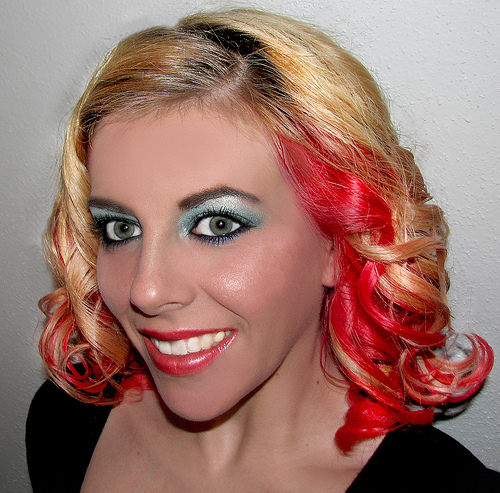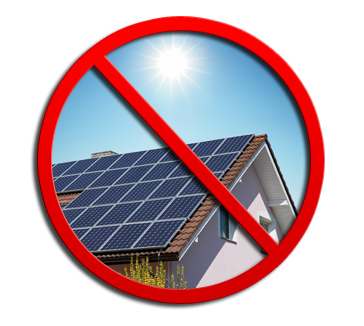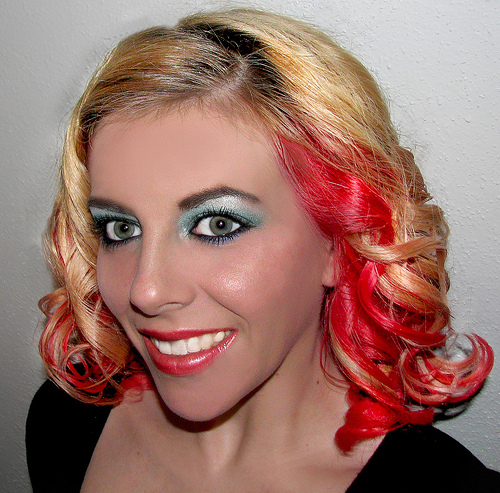Send your question to Umbra!
Q. Dear Umbra,
I’m sure you’ve already addressed this, having bright red hair and all, but I was wondering about your advice on hair coloring. I’d like to hide my grays without damaging the environment or myself. And, if it’s possible, to do so in a cost efficient and time efficient manner. That would be awesome.
Thanks!
Erin
A.  Wanna dye safely? Follow Umbra’s advice.Photo: dreamglow_pumpkincat210 via FlickrDearest Erin,
Wanna dye safely? Follow Umbra’s advice.Photo: dreamglow_pumpkincat210 via FlickrDearest Erin,
You’ve got your gray-streaked head on straight. Your desire to hide your grays without collateral damage to your health or the planet is noble and stylish. I would like to remind you though that no matter the color of your mane, be you redhead or bluehead, true beauty still comes from within.
As for me, you’ve caught me red-headed. Many a discerning reader has wondered how my hair is so vivid. But really, Erin, a girl has to have some secrets. [Ok, I confess. It’s a very red, reusable wig!]
Color me bad
First, you’re right to be concerned about your health. According to the Environmental Working Group, “more than one-third of all personal care products contain at least one ingredient linked to cancer.” Toxic products tend to accumulate in our bodies. This is called our “body burden” — who needs another one of those? — and the ingredients that are harmful to us humans, can also do damage to pipes and to the waterways that all those ingredients eventually wash into.
Thankfully, less-toxic brands are out there. I won’t mention any dyes here, as I personally can’t vouch for them. But if you’re dyeing-it-yourself, you can check the safety of specific hair dyes (and lots of other beauty products) on the EWG Skin Deep website.
Make sure you avoid:
- Lead acetates/Heavy Metals — usually found in dark dyes, these are toxic and can affect the central nervous system and reproductive system
- Para-Phenylenediamine (PPD) — can cause eye irritation, asthma, renal failure, vertigo, or coma!
- Parabens — preservatives that can damage the endocrine system and affect reproduction.
- Ammonia — linked to long term health effects and environmental contamination. (Thankfully, many hair care product makers have lowered the ammonia content in their products.)
- Petrochemicals like Coal Tar Dyes – linked to bladder cancer
The dye is cast
If you get your strands professionally stained, ask what brands of dye they use. You can look those up as well. If your hair cuttery doesn’t use a non-toxic dye, look for a salon that does. Also, as you consider your color, think about whether you want a permanent or semi-permanent dye job. And know going in that more permanent dyes are more likely to contain toxins, making them a greater health risk.
Is that her natural color?
If you want a cheap and dirty method, there are all sorts of natural things (potato peels, vegetable roots) that people have used to color their coifs. An unlikely dye you might try is something you have right in front of you. No, not your laptop. Your coffee mug! According to a close associate, washing your hair with coffee or leftover coffee grinds does wonders. The dark color from the beans coats those fair hairs. [If you readers out there have any natural hair dyeing success stories, please share them in the comments area below!]
Another thing you might try is henna – just make sure it 100% henna that hasn’t had heavy metals or PPD added. Henna is a plant-based green powder often sold near the tea aisle of a health food store. You mix the henna with water to make a “mud,” and apply it to your hair. It takes about an hour from start to finish. Other plant-based hair dyes include Cassia Obovata for blond hair and Indigo for dark hair.
Henna comes time-tested, even the ancient Egyptians used it. Classic beauty like Cleopatra’s for less than $10 makes henna a pretty good way to go. Just remember that even though henna does do a nice job of covering grays it is not permanent (it lasts for weeks or months).
So, there you have it, Erin. Good luck with your locks!
Hair-brainedly,
Umbra
P.S.: Here are a few extra links you might also find useful:
- For a non-toxic way to wash your hair, check out my video on DIY Shampoo.
- If you have blonde ambitions, here are some tips to get you there.
- For ways to combine plant=based dyes like henna to get the color you desire, click here.
- Click here to find a more sustainable salon.
- And here for more info on specific brands of “natural” dye.




